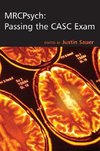
-
 Anglický jazyk
Anglický jazyk
Brain-computer interfacing
Autor: Source: Wikipedia
Source: Wikipedia. Pages: 39. Chapters: Electroencephalography, Brain-computer interface, Optogenetics, Brain implant, Eduardo Reck Miranda, Electrocorticography, Neurotrophic electrode, Bereitschaftspotential, Emotiv Systems, Miguel Nicolelis, Intracranial... Viac o knihe
Na objednávku
14.76 €
bežná cena: 16.40 €
O knihe
Source: Wikipedia. Pages: 39. Chapters: Electroencephalography, Brain-computer interface, Optogenetics, Brain implant, Eduardo Reck Miranda, Electrocorticography, Neurotrophic electrode, Bereitschaftspotential, Emotiv Systems, Miguel Nicolelis, Intracranial EEG, Cyberware, Neil Weste, Neural Impulse Actuator, NeuroSky, Transcranial alternating current stimulation, Comparison of neurofeedback software, Comparison of consumer brain-computer interfaces, Neurochip, OpenVibe, BrainGate, Cyberkinetics, Thought recording and reproduction device, Force Trainer, Mindball. Excerpt: Electroencephalography (EEG) is the recording of electrical activity along the scalp. EEG measures voltage fluctuations resulting from ionic current flows within the neurons of the brain. In clinical contexts, EEG refers to the recording of the brain's spontaneous electrical activity over a short period of time, usually 20-40 minutes, as recorded from multiple electrodes placed on the scalp. In neurology, the main diagnostic application of EEG is in the case of epilepsy, as epileptic activity can create clear abnormalities on a standard EEG study. A secondary clinical use of EEG is in the diagnosis of coma, encephalopathies, and brain death. EEG used to be a first-line method for the diagnosis of tumors, stroke and other focal brain disorders, but this use has decreased with the advent of anatomical imaging techniques with high (<1 mm) spatial resolution such as MRI and CT. Despite limited spatial resolution, EEG continues to be a valuable tool for research and diagnosis, especially when millisecond-range temporal resolution (not possible with CT or MRI) is required. Derivatives of the EEG technique include evoked potentials (EP), which involves averaging the EEG activity time-locked to the presentation of a stimulus of some sort (visual, somatosensory, or auditory). Event-related potentials (ERPs) refer to averaged EEG responses that are time-locked to more complex processing of stimuli; this technique is used in cognitive science, cognitive psychology, and psychophysiological research. The brain's electrical charge is maintained by billions of neurons. Neurons are electrically charged (or "polarized") by membrane transport proteins that pump ions across their membranes. Neurons are constantly exchanging ions with the extracellular milieu, for example to maintain resting potential and to propagate action potentials. Ions of like charge repel each other, and when many ions are pushed out of many neurons at the same time, they can push their neighbours, who push t
- Vydavateľstvo: Books LLC, Reference Series
- Rok vydania: 2015
- Formát: Paperback
- Rozmer: 246 x 189 mm
- Jazyk: Anglický jazyk
- ISBN: 9781157364481












